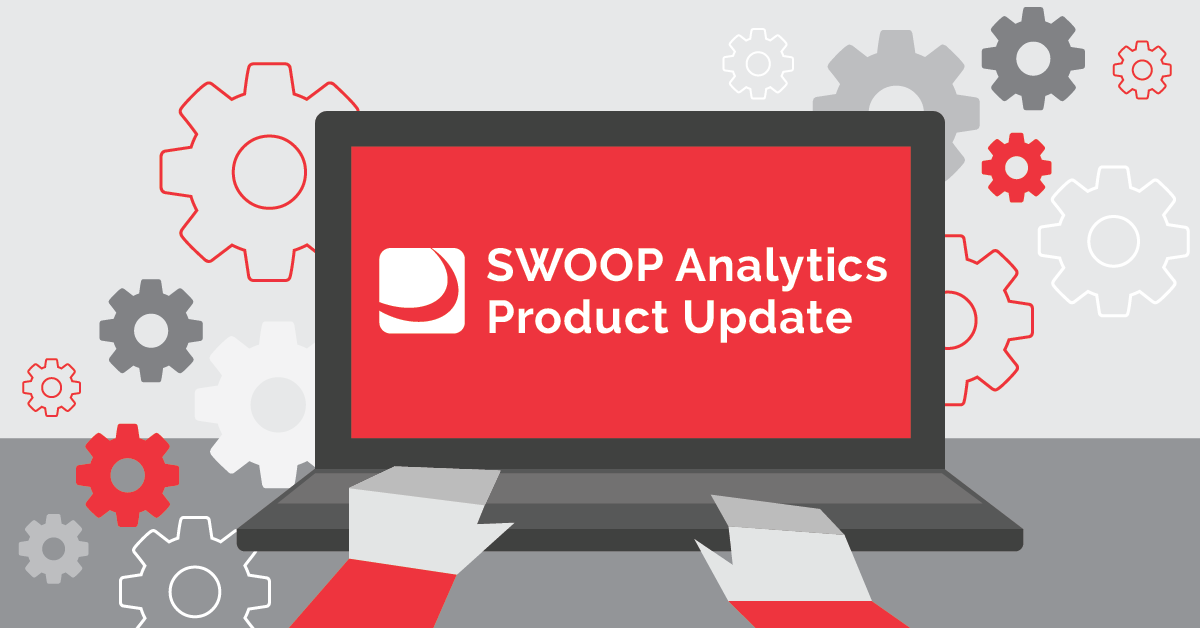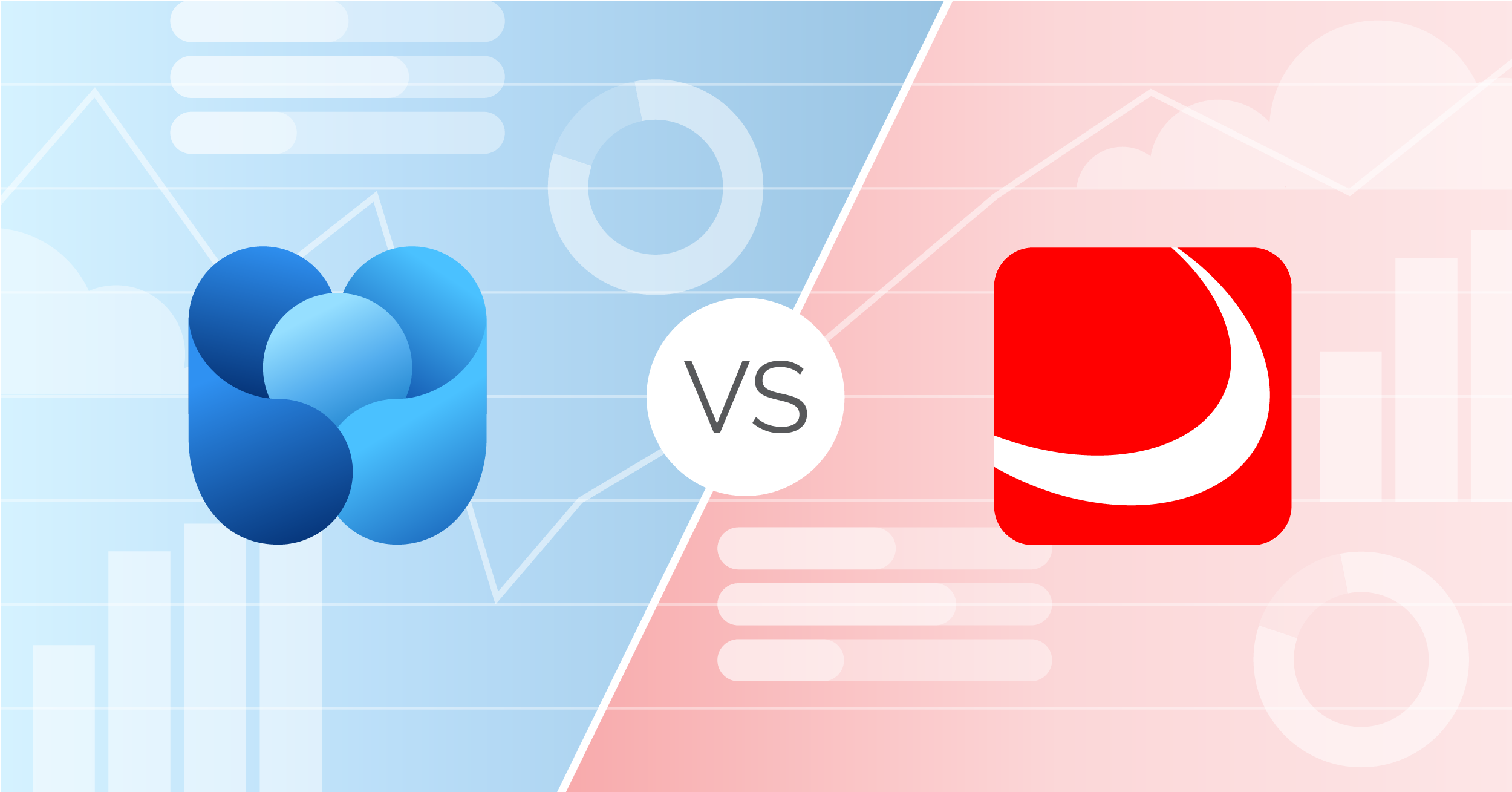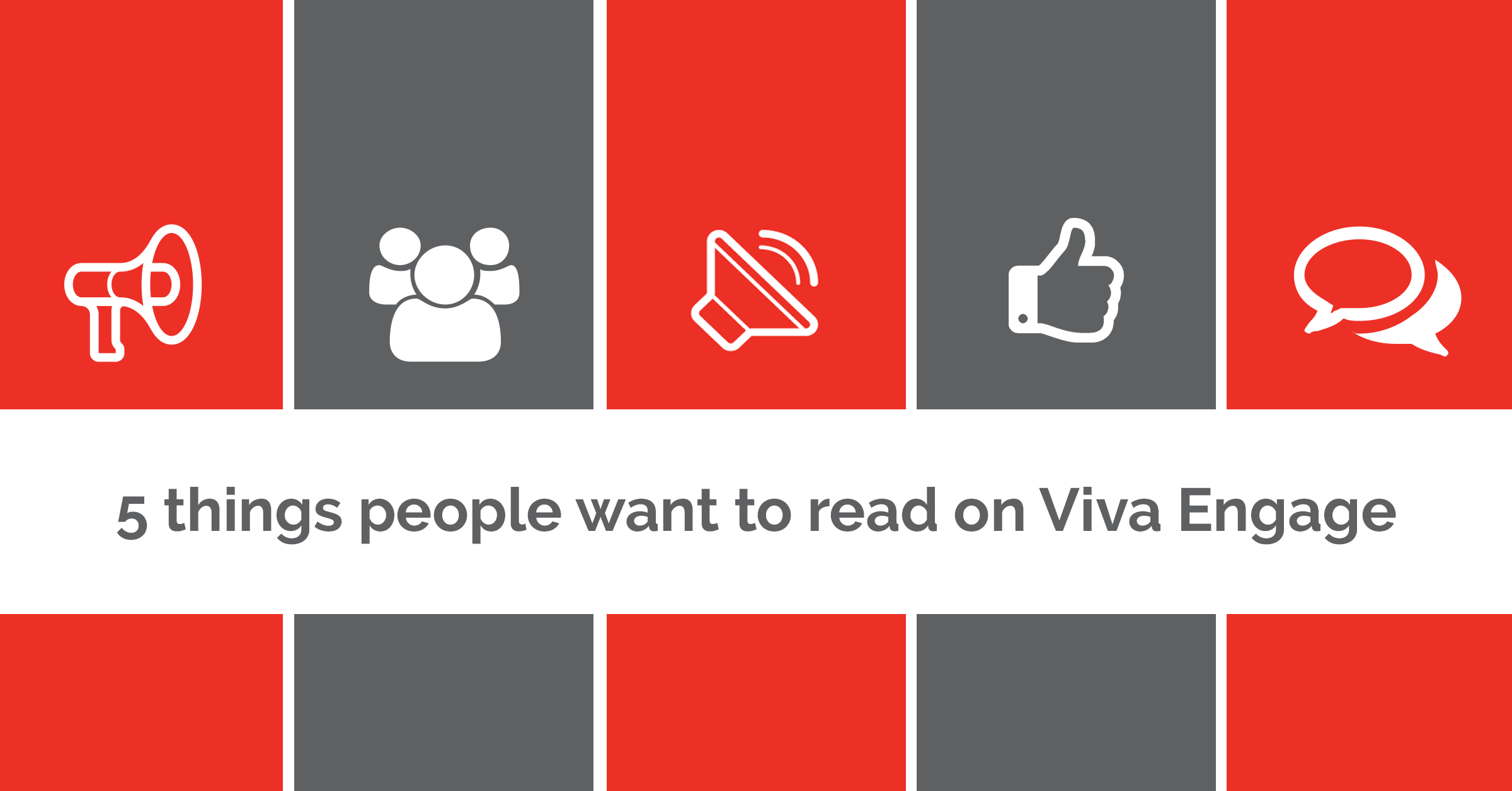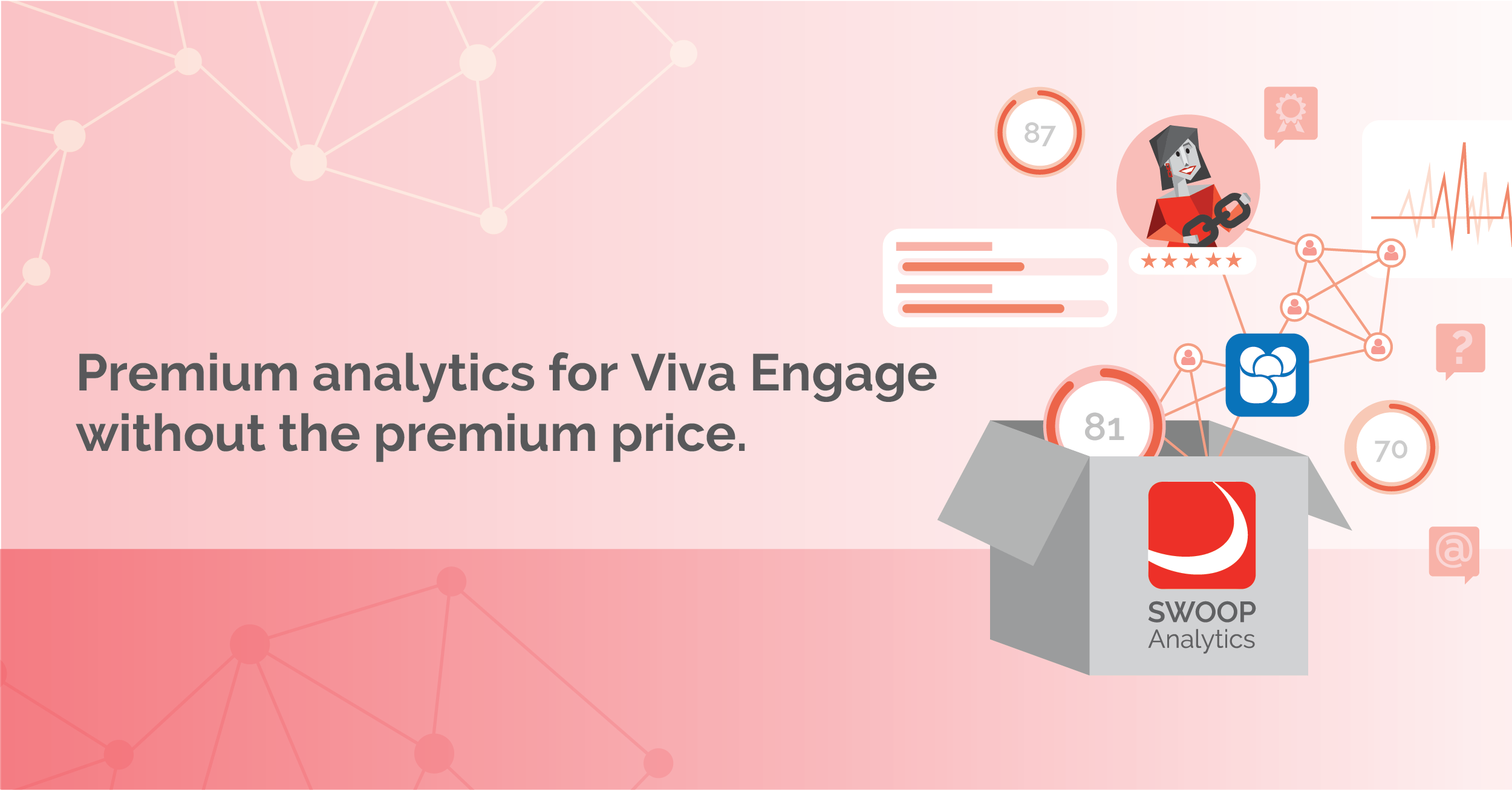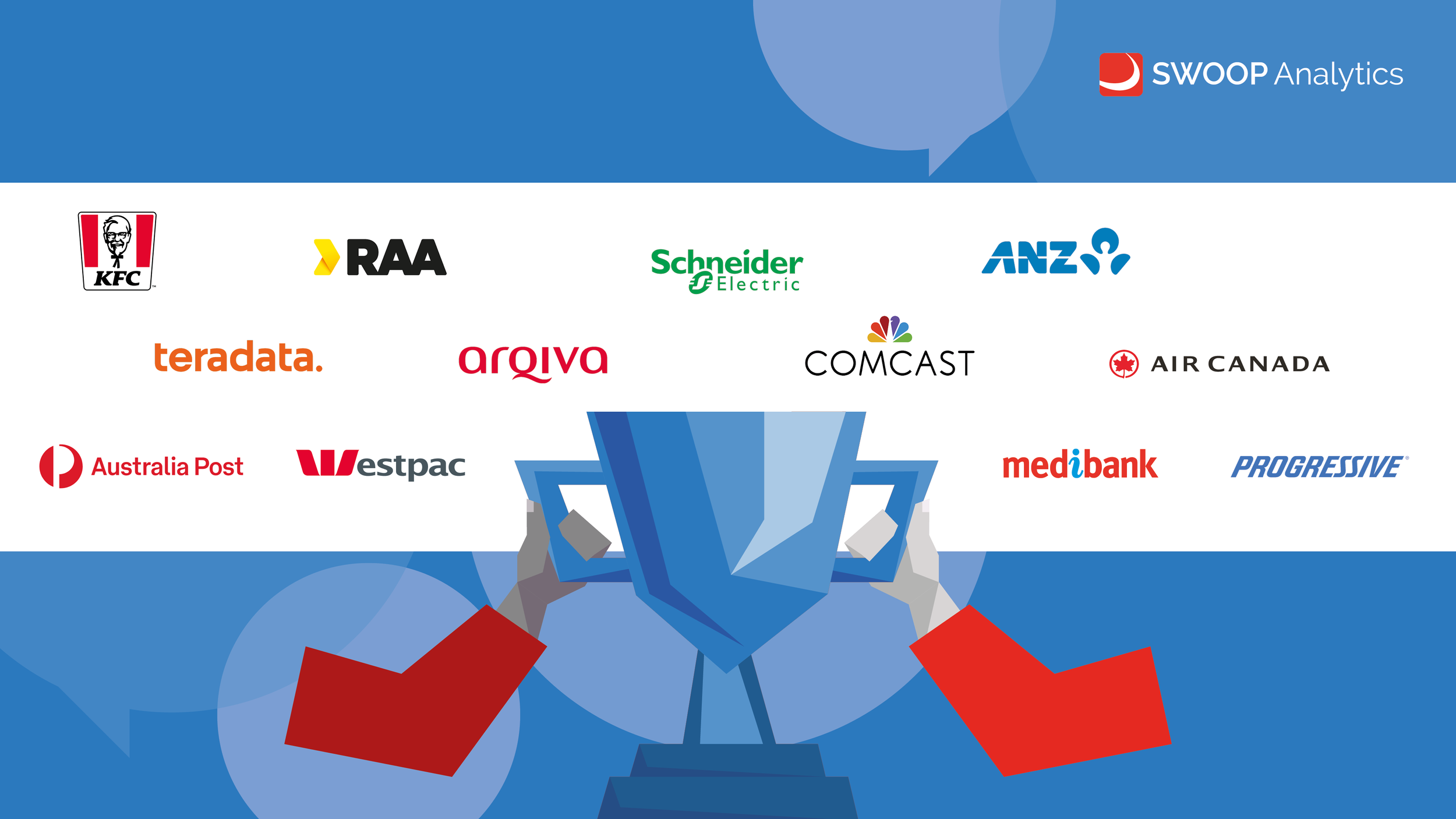
SWOOP Blog
Latest Articles
Blog Archive
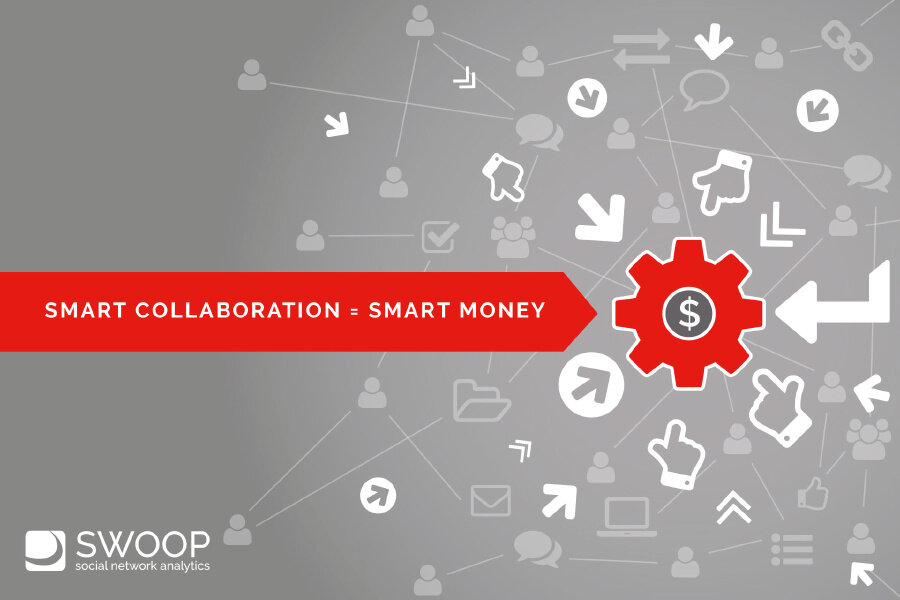
Smart Collaboration = Smart Money
‘Smart Collaboration’ is the title of Harvard’s Heidi Gardner’s latest book. The book builds and expands on her well cited HBR article “When Senior Managers Won’t Collaborate” , where she presents some compelling data demonstrating that collaboration does pay, big time. Her network representation comparing the networks of two lawyers, with Lawyer 2 responsible for generating much higher revenues from her larger and more diverse network, may seem quite logical.

Data-Driven Collaboration Part 3: Sustaining Performance through Continuous Value Delivery
In this, the final post in our series, co-authored by SWOOP Analytics and Carpool Agency, we will identify how to sustain the momentum to ensure that value is continuously delivered as a matter of course.

The Enterprise Social Network Graph Battle: Who Is Poised to Win?
Graphs have been around forever, but the internet has given them new life. It's refocused our attention on the use of graph concepts for information search as an option to traditional hierarchical taxonomic search.

Data-Driven Collaboration Part 2: Recognizing Personas and Behaviors to Improve Engagement
In Part 1 of this series, “Data-Driven Collaboration Design”—a collaboration between SWOOP Analytics and Carpool Agency—we demonstrated how data can be used as a diagnostic tool to inform the goals and strategies that drive your business’ internal communication and collaboration. In this post, we will take that thought one step further and show how, after your course is charted to improve internal communication and collaboration, your data continues to play a vital role in shaping your journey.

How to Use Hashtag Analytics to Track Employee Engagement
The origin of the hashtag can be traced to identifying key words in computer code. From there it evolved to tagging topics or groups in early chat rooms.
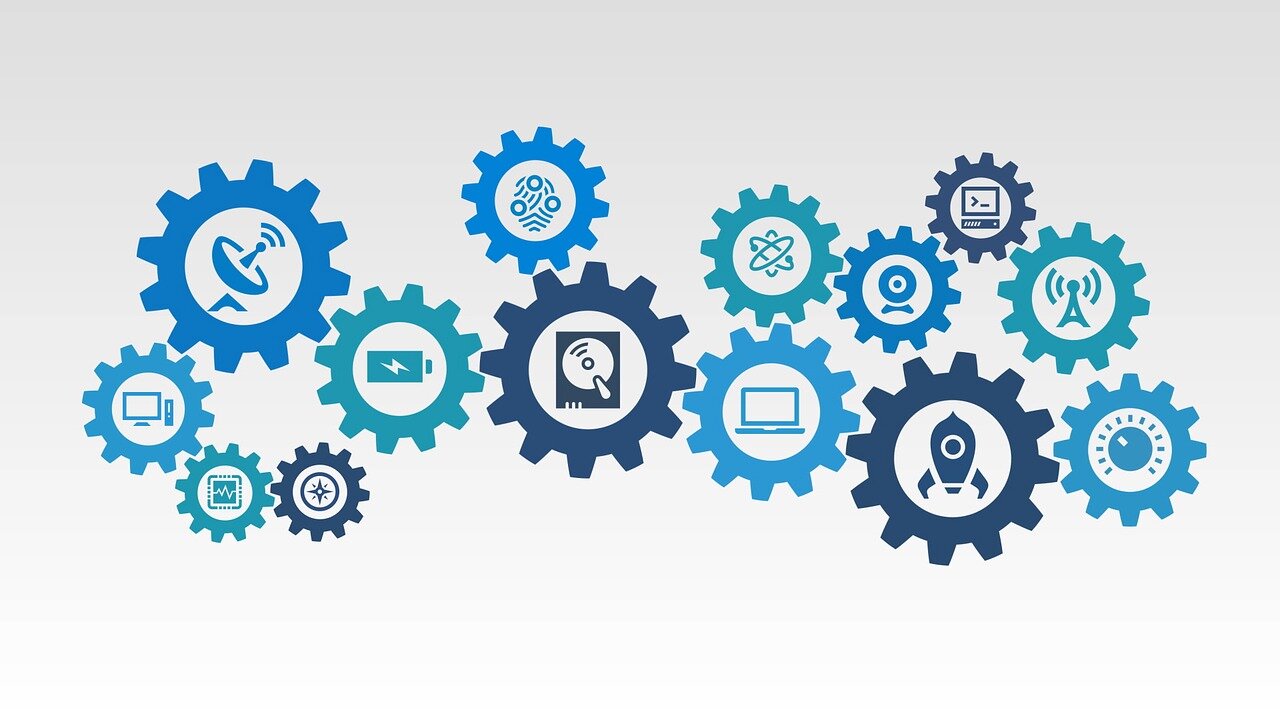
Data-Driven Collaboration Part 1: How Rich Data Can Improve Your Communication
This is the first of a series, coauthored by Laurence Lock Lee of SWOOP Analytics and Chris Slemp of Carpool Agency, in which we will explain how you can use rich, people-focused data to enhance communication, increase collaboration, and develop a more efficient and productive workforce.

Diversity is Essential but not Sufficient
Diversity is a big word in business today. We are preached to continuously about how important having diverse leadership is to improving your performance. HBR in their article on ‘Why Diverse teams are Smarter”, identify studies showing that diversity based on both ethnicity and/or gender can lead to above average returns.

Are we Getting Closer to True Knowledge Sharing Systems?
First generation knowledge management (KM) systems were essentially re-labelled content stores. Labelling such content as ‘knowledge’ did much to discredit the whole Knowledge Management movement of the 1990s. During this time, I commonly referred to knowledge management systems as needing to comprise both “collections and connections”, but we had forgotten about the “connections”.

Getting “Liked”: Is Content Overrated?
We are regularly bombarded with the message that “Content is King”, quickly followed by a plethora of methods, tips and even tricks on how to make our content more attractive i.e. being “Liked” by many. Social media has introduced the “Like” button so we can more explicitly signal our appreciation of the content that we are exposed to.

Digital Hub Platforms Can Improve Enterprise Collaboration
Looking for the perfect digital hub? Then look in the camera. That’s right, the perfect digital hub is you.

What can we Learn from Artificial Intelligence?
This might seem strange, suggesting that a science dedicated to learning from how we humans operate, could actually return the favour by teaching us about ourselves? As strange as this may sound, this is precisely what I am suggesting.

We’ve Disrupted the Formal Organisation: But what does it look like now?
Digital disruption, Holocracies, Wirearchies are attacking the formal hierarchy as we had come to know it. While we might accept that the formal hierarchy is becoming less reflective of how work is getting done, it still reflects how senior executives are designing for work to be done.

Who Should Decide How You Should Collaborate?
In a recent post, prior to Microsoft’s recent Ignite 2016 conference, we intimated that we hoped that in the push to build the ultimate office tool the core features of the component parts were not sacrificed in the name of standardization. Yammer, has re-surfaced as a more integral part of Office 365.

Disrupt Sydney 2016 - Not to Take Anything for Granted
Q&A with SWOOP Co-Founder Dr Laurence Lock Lee after attending and presenting at “Disrupt Sydney” on 23 September, 2016. Disrupt Sydney is a one-day annual conference organised by the University of Sydney which aims to discuss and debate (digital) disruption.

Q&A: Start-ups vs Large Corporates
SWOOP Analytics celebrated its second birthday late last month with our distributed workforce face-to-face, many for the first time; and also many of our early adopter partners and clients. Unlike most start-ups addressing the consumer market, SWOOP Analytics targets the ‘big end of town” i.e. large corporates and public institutions whose procurement practices go far beyond someone simply pushing the ‘buy’ button. We have been fortunate to have several highly experienced executives and consultants advising us on our product startup journey. We thought we would take advantage of their presence to conduct a mock Q&A panel session, modelled on the ABC show Q&A. We chose our panel members based on their experience with working and advising both start-ups and large corporations. Our panel topic was “How can Startups work Effectively with Large Corporates”.

What do Customer Communities have in Common with Employee Communities?
In June we wrote a blog post “Is Bridging the Enterprise-Consumer Social Networking Divide a Bridge too Far”, which went to some length in describing why these two worlds appeared to be operating in different solar systems. In fact, we pointed out that blindly adopting the media centricity and activity measures from consumer social networking into the Enterprise, could actually cause more harm than good. In this post we want to explore what might be common and potentially useful adoptions from the consumer world to inside the Enterprise. I must say that this post has been influenced by Michael Wu coming to town and telling us a little about his perspectives on the ‘Science of Social’ . Michael is the chief scientist at Lithium, an organisation that specialises in customer communities. While my interest in customer communities is somewhat less than my interest in Enterprise communities, Michael Wu is well regarded in the world of data science, so I was sure to learn something from him; and I wasn’t disappointed.

What Enterprise Social Networking Can Learn from Pokémon Go
Pokémon itself was not an overnight success. It was Niantic's release of a location-enabled version for smartphones that triggered its viral growth. Enterprise Social Networking (ESN) has been around for quite a while too. Viral growth, however, is still an unfulfilled aspiration for most.

Knowing-Doing Gap
In this post we continue to explore how we might better engage the “Long Tail” participants in our Enterprise Social Networking (ESN) communities. In 2000 Jeffey Pfeffer and Robert Sutton published their book entitled the “Knowing-Doing Gap: How Smart Companies Turn Knowledge into Action” . Its publication was timely for many of us working in Knowledge Management programs at the time as it reinforced to us that knowledge sharing alone is not enough. What they found in their research was that there were many under-performing companies who really didn’t have a knowledge problem. Their problem was more with actioning what they knew. For example, they talk about organisations who have a culture of fear, where staff were reluctant to take actions unless they were 100% sure of a positive outcome. A summary of their recommendations can be found in this FastCompany interview. In essence the authors recommend prioritising “action over words”. At times this may mean taking actions that could be considered ill-prepared for. However, they use the examples of Bill Gross’ Idea Lab and Thomas Edison’s Labs of learning environments, where ‘safe’ actions can be taken in the spirit of experimentation and learning, thereby generating tangible value for the organisation. In other words, “stop thinking about it and just try something!”.

Tyranny of the ‘Long Tail’
The advent of Internet-enabled e-commerce brought an increased focus on ‘Long Tail’ distributions. Internet organisations like Amazon are able to exploit their low marginal costs by selling low volumes to the Long Tail of buyers with unique non-mainstream needs.

Need to convince someone? Bring Data (and a good story)
As Daniel Pink suggests “to sell is human”. Even if we do not have a formal ‘selling’ role we are always looking to ‘sell’ someone on our point of view, our recommendations, our need for their help etc.. As data analysts we live and breathe data every day, whether we are looking to develop some new insights, prove a case or simply explore possibilities. In the end we are doing it to influence someone or some group. In these days of ‘evidence based decision-making’ I am wary that one person’s ‘evidence’ is another person’s ‘garbage’. You don’t have to look much further than climate change sceptics to appreciate that. I was therefore intrigued when I came across Shawn Callahan’s recent blog post on “The role of stories in data storytelling”. Shawn talks about the use of ‘story’ before, during and after data analysis.

